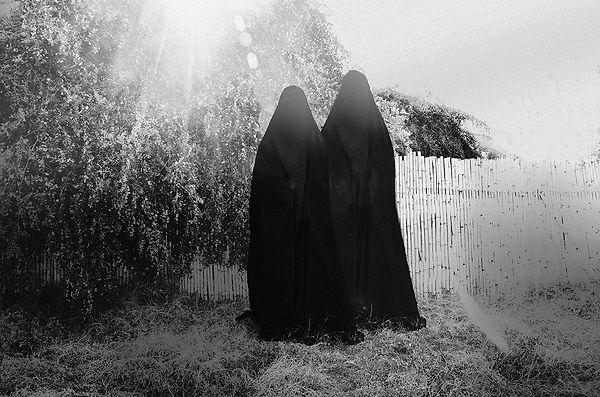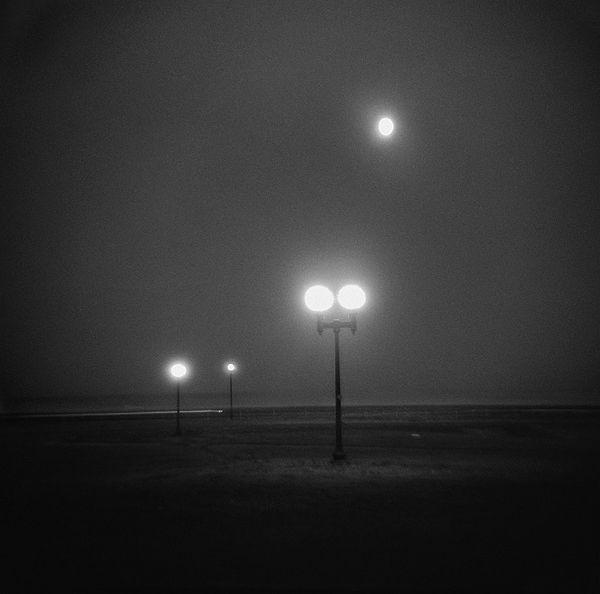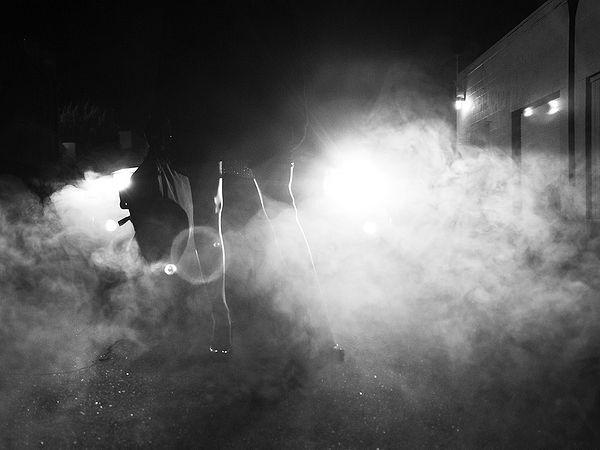6 Creepy And Bizarre Cases Of Mass Hysteria From Around The World!
Mass hysteria is probably one of the most interesting topics in psychology. Mass hysteria (aka collective hysteria or collective obsessional behavior) is a phenomenon that “transmits collective illusions of threats, whether real or imaginary, through a population in society as a result of rumors and fear.” We’ve collected 6 of the most bizarre cases in history that will probably make you sit in a chair all day and do nothing…
The stories were taken from Wikipedia.
1. In 2006, the foul-smelling water of Mahim Creek (Mumbai, India) which is a dumping ground for Mumbai’s industrial waste, turned sweet.

Many believed it to be the divine intervention of Sufi Saint Makhdoom Ali Mahimi, rejoicing in this ‘miracle’ by drinking the water and taking a bath in it. Geologists explained the strange phenomenon as the discharge of fresh water from an underground rock formation, which was preceded by excessive rainfall in Mumbai. The water turned saline the next day while the residents went back to blocking their nose at the very proximity of the miraculous destination.
Within hours of this event, people in Gujarat also claimed that the seawater at Tithal beach had turned sweet. Ultimately, it all went down the (salty) drain. What we’d really like to know is – who was the first person to discover this ‘sweetness?’
2. Tanganyika laughter epidemic

The Tanganyika laughter epidemic of 1962 was an outbreak of mass hysteria rumored to have occurred in or near the village of Kashasha on the western coast of Lake Victoria in the modern nation of Tanzania (formerly Tanganyika) near the border of Uganda.
The laughter epidemic began on January 30, 1962, at a mission-run boarding school for girls in Kashasha. The laughter started with three girls and spread haphazardly throughout the school, affecting 95 of the 159 pupils, aged 12–18. Symptoms lasted from a few hours to 16 days in those affected. The teaching staff were not affected but reported that students were unable to concentrate on their lessons. The school was forced to close down on March 18, 1962.
After the school was closed and the students were sent home, the epidemic spread to Nshamba, a village that was home to several of the girls. In April and May, 217 people had laughing attacks in the village, most of them being school children and young adults. The Kashasha school was reopened on May 21, only to be closed again at the end of June. In June, the laughing epidemic spread to Ramashenye girls’ middle school, near Bukoba, affecting 48 girls.
The school from which the epidemic sprang was sued; the children and parents transmitted it to the surrounding area. Other schools, Kashasha itself, and another village, comprising thousands of people, were all affected to some degree. Six to eighteen months after it started, the phenomenon died off. The following symptoms were reported on an equally massive scale as the reports of the laughter itself: pain, fainting, flatulence, respiratory problems, rashes, attacks of crying, and random screaming. In total 14 schools were shut down and 1000 people were affected.
3. Hindu milk miracle
The Hindu milk miracle was a phenomenon, considered by many Hindus as a miracle, which started on September 21, 1995, in which statues of the Hindu deity Ganesha allegedly 'drank' milk offerings. It attracted great attention from people and the media, particularly in India.
Before dawn on September 21, 1995, a Hindu worshipper at a temple in south New Delhi made an offering of milk to a statue of Ganesha. When a spoonful of milk from the bowl was held up to the trunk of the statue, the liquid was seen to disappear, apparently taken in by the idol. Word of the event spread quickly, and by mid-morning, it was found that statues of the entire Hindu pantheon in temples all over India were taking in milk.
By noon the news had spread beyond India, and Hindu temples in the United Kingdom, Canada, UAE, and Nepal among other countries had successfully replicated the phenomenon,
The reported miracle had a significant effect on the areas around major temples; vehicle and pedestrian traffic in New Delhi were dense enough to create a gridlock lasting until late in the evening. Many stores in areas with significant Hindu communities saw a massive jump in sales of milk, with one Gateway store in England selling over 25,000 pints of milk, and overall milk sales in New Delhi jumped over 30%.
Seeking to explain the phenomenon, Ross McDowall from India's Ministry of Science and Technology traveled to a temple in New Delhi and made an offering of milk containing a food coloring. As the level of liquid in the spoon dropped, the scientists hypothesized that after the milk disappeared from the spoon, it coated the statue beneath where the spoon was placed. With this result, the scientists offered capillary action as an explanation; the surface tension of the milk was pulling the liquid up and out of the spoon before gravity caused it to run down the front of the statue.
4. Strawberries with Sugar

'Strawberries with Sugar” Virus was an episode of mass hysteria that erupted in Portugal in May 2006.
It was initiated by an episode of the popular Portuguese teen soap opera entitled 'Morangos com Açúcar' in which a terrible disease was introduced to the school attended by the characters in the series. The television show follows the stories of a group of 'normal' teenage kids and the dramatized ups and downs that they encounter in their daily lives, much like the Canadian drama series 'Degrassi.' Only a few days after the episode aired, a few teens began to develop symptoms similar to those depicted on the show. These symptoms included rashes, breathing troubles, and severe dizziness. Before long, the 'disease' had spread to more than 300 high school students in 14 different Portuguese schools. Some schools were actually forced to temporarily close because of the severity of the outbreak. However, the Portuguese National Institute for Medical Emergency brushed the epidemic off, calling it a case of mass hysteria. Doctor Nelson Pereira, the director of the PNIME, said, 'What we concretely have is a few children with allergies and apparently a phenomenon of many other children imitating.' Another doctor, Mario Almeidi, pronounced his disbelief in the disease, saying 'I know of no disease which is so selective that it only attacks school children.'
5. Penis Panic! (aka Koro)

Koro is a culture-specific syndrome delusional disorder in which an individual has an overpowering belief that one's genitals are retracting and will disappear, despite the lack of any true longstanding changes to the genitals. It’s also known as shrinking penis. The syndrome occurs worldwide, and mass hysteria of genital shrinkage anxiety has a history in Africa, Asia, and Europe!
6. And finally, the famous case of "Dancing Plague of 1518"

The Dancing Plague of 1518 was a case of dancing mania that occurred in Strasbourg, Alsace (then part of the Holy Roman Empire) in July 1518. Around 400 people took to dancing for days without rest, and, over the period of about one month, some of those affected died of heart attack, stroke, or exhaustion.
The outbreak began in July 1518, when a woman, Mrs. Troffea, began to dance fervently in a street in Strasbourg. This lasted somewhere between four and six days. Within a week, 34 others had joined, and within a month, there were around 400 dancers, predominantly female. One report indicates that for a period the plague killed around fifteen people per day!
Historical documents, including 'physician notes, cathedral sermons, local and regional chronicles, and even notes issued by the Strasbourg city council' are clear that the victims danced. It is not known why these people danced, some even to their deaths.
Keşfet ile ziyaret ettiğin tüm kategorileri tek akışta gör!


Send Comment